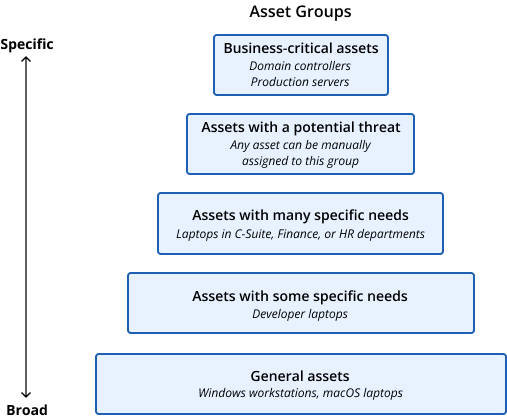Asset groups help you streamline policy management and organize assets by defined criteria.
Asset Groups for Policy Assignment

The pyramid diagram represents a guideline for grouping assets with policy assignment as the primary goal. Your organizational needs will define your specific structure.
- Start at the bottom of your pyramid by creating broadly-defined groups for assets that do not have specific requirements. These groups form a base level of protection for your fleet.
- Next, work your way up the pyramid by defining smaller groups of assets that have particular prevention needs. As you proceed up each level, the grouped assets become more critical.
- The top of the pyramid represents assets that are business-critical; these assets must not be disrupted by prevention rules that are used elsewhere in your organization.
- For next steps in mapping your pyramid structure, see Best Practices for Ranking Policies.
Asset Groups without Policies
You can create an Asset Group without a policy so that assets can be group members and still retain their policy assignment from a different group.
These organizational Asset Groups can help with:
- Visibility: See every asset in your fleet that matches certain criteria; for example, assets in a specific office or assets running a particular sensor version. You can use these groups for tagging.
- Testing group criteria: When you create groups that will be used for policy assignment, you can start by adjusting criteria and reviewing group membership until all the appropriate assets are members. Then, you can assign the appropriate policy to protect the assets.